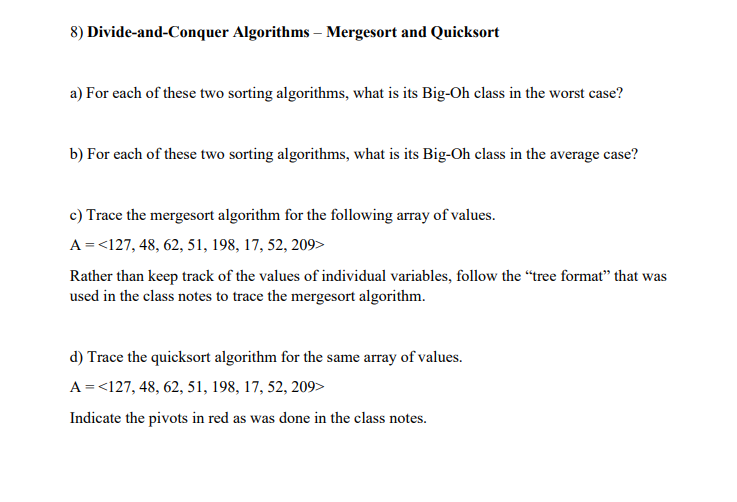Answered step by step
Verified Expert Solution
Question
1 Approved Answer
'3']: DeereaseandCenquer Algorithm Maximum Element in Array a]: 1iWrite a recursive decreaseandconquer algorithm to calculate the maximum element in a non empty array of real


a) Write a recursive decrease-and-conquer algorithm to calculate the maximum element in a non- empty array of real numbers. Your algorithm should work by comparing the last element in the array with the maximum of the "remaining front end" of the array. For example, to find the largest element in the array your algorithm should call itself to find the maximum of and return either 10 or the result of the recursive call, whichever is larger. Do not use Python's built-in max() function. Do not rearrange the elements of the array by sorting or partially sorting them. Do not use any loops. You can assume that the array has at least one element in it. Your function call should should be Maximum(A, right) where the two input parameters are the array and right index. With these input parameters, the function should return the maximum array element from A[0] to A[right]. Return the value of the array element, not the index where it occurs in the array. b) Trace your algorithm with A= c) Write a recurrence relation for the number of comparisons of array elements that are performed for a problem of size n. Then perform asymptotic analysis to determine the Big-Oh class for this algorithm
Step by Step Solution
There are 3 Steps involved in it
Step: 1

Get Instant Access to Expert-Tailored Solutions
See step-by-step solutions with expert insights and AI powered tools for academic success
Step: 2

Step: 3

Ace Your Homework with AI
Get the answers you need in no time with our AI-driven, step-by-step assistance
Get Started


